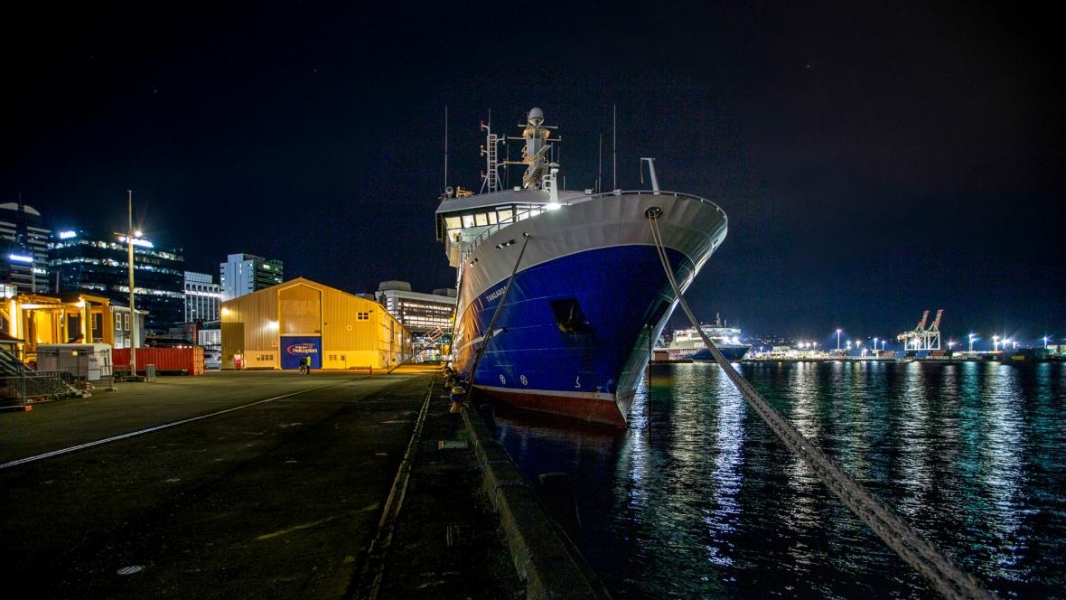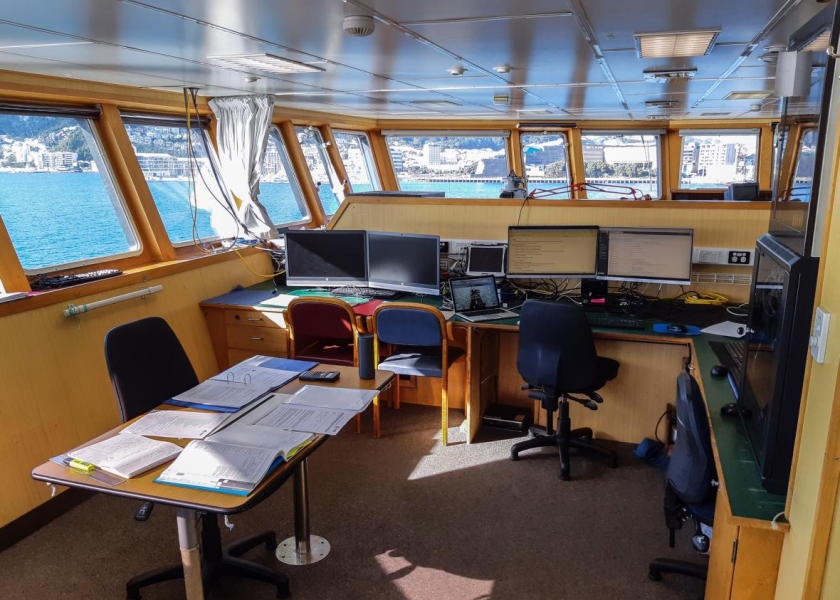After having to cut its last voyage short to return to shore for lockdown, NIWA's flagship research vessel Tangaroa finally left Wellington on May 17 and set set sail for the Campbell Plateau, to undertake a camera survey of the seabed to better understand the biodiversity of these habitats in commercial fishing areas.
Planning for this voyage has presented a few challenges for NIWA vessel operations manager Greg Foothead as he waited to hear if lockdown restrictions would be eased in time for the ship to leave.
“Not knowing until Monday whether we would transition to Level 2 has meant a lot more planning than usual, but we have now got the clarity we need and have planned how things will operate on board in accordance with the latest government guidelines.”
Maintaining physical distancing measures on board will be a challenge for the 25 researchers and crew, but will be made easier with staggered meal times. Galley staff will wear PPE and serve food from the servery, rather than the usual self-service.
Scientists and crew for the voyage have also been encouraged to have a COVID-19 swab test before leaving.
The amount of science undertaken on the voyage, being undertaken for Fisheries New Zealand, has also had to be reorganised and truncated in parts.
Voyage leader and NIWA fisheries scientist Owen Anderson says while the voyage has been complex to arrange and has reduced in length from four to three weeks, he is confident of achieving most of what was originally planned.
“Operationally this is a straight-forward voyage that will use NIWA’s Deep-Towed Imaging System (DTIS) to record seabed habitats and fauna. The video and still imagery collected will then be analysed to provide more information on the distribution of these often fragile and vulnerable ecosystems.”
The voyage is part of a long-term research programme that began in 2017. It aims to collect seabed data to reduce uncertainty in scientific models that predict the distribution of habitats across New Zealand’s Exclusive Economic Zone.
One of the key aims has been to generate data layers to inform an assessment of the risk from bottom trawling on seafloor habitats and animals.
“We will use the information from this survey to test existing species distribution models and update them,” Mr Anderson said.
“We hope this will give us a better handle on where these habitats are, and the characteristics of the seafloor that drive their growth and distribution.”
Updated information and modelling will help inform environmental management decision making in commercial fishing areas where deep-sea bottom trawling is used.
The ship returns to Wellington on June 7. Until then, the researchers are hoping to share photos of deep sea coral and sponge habitats, along with various species of molluscs, echinoderms, crustaceans, and other invertebrate species in depths of 50 to 2000m in selected areas of the Campbell Plateau through the voyage blog. The ship returns to Wellington on June 7.
Meanwhile, NIWA has also rearranged Tangaroa’s voyage schedule for the next few months to ensure the voyages are entirely New Zealand based. Voyages with international collaborators or needing equipment to come from overseas have been delayed until later this year pending a decision on easing of border restrictions.



